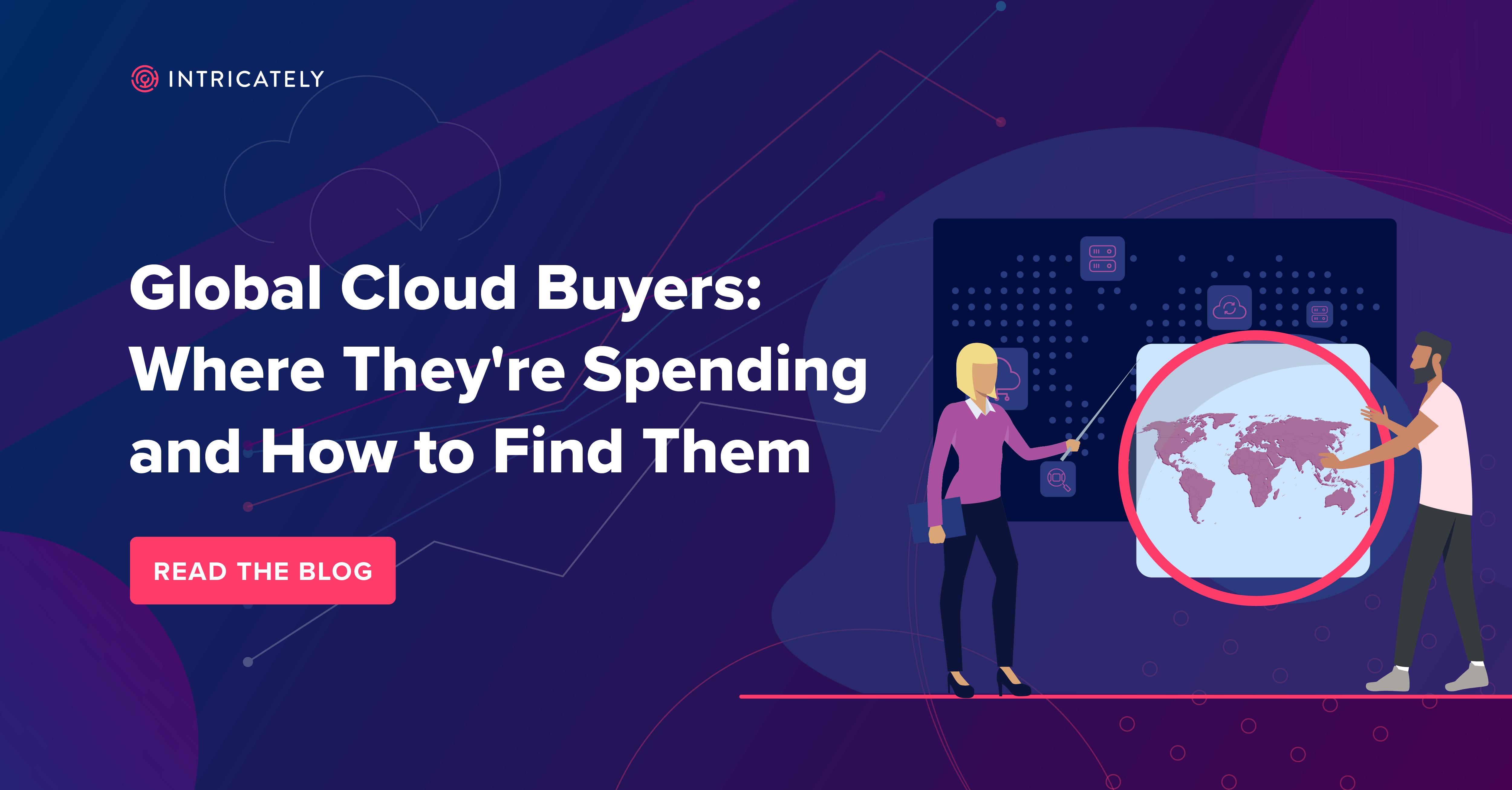
 back to all posts
back to all posts
Understand Your Target Accounts’ Application Maturity To Drive Pipeline

According to Intricately data, the number of applications deployed to the cloud has grown roughly 38% each year for the last three years, and there is no sign of slowing down. How can cloud sellers capitalize on this growth?
They can start by understanding where their prospects are on their cloud adoption journey.
In our latest Application Deployment Report, we offer cloud sellers visibility into the application deployment landscape. The report answers questions like:
- What factors impact an application’s digital footprint?
- Which businesses are being deployed to the public cloud and which segments are building on-premise data centers?
- What does application maturity say about the prospects in your pipeline?
By understanding the application behavior and digital infrastructure of target accounts, marketing teams can create more accurate messages that sales teams can activate in their prospecting. Read on for some of the insights you'll find in the full report that can shape your 2021 go-to-market strategy.
The Cloud is Home to Most Applications
According to Intricately data, between 2013 and 2019, the cloud experienced a surge of application deployment—increasing nearly ten-fold. Cloud growth clearly outpaces other configuration growth, but data center and hybrid configurations are growing, albeit at a slower pace.
IaaS and PaaS solutions have made launching applications to the cloud significantly easier, as startups don’t have hefty CapEx costs and can scale without building their own infrastructure. As a result, cloud configuration growth is predominately made up of cloud-native companies.
Hybrid configuration, on the other hand, is driven by top Fortune 2,000 companies and data centers are primarily used by Fortune 500 companies.
But The Cloud Isn’t Home to Every Application
Applications have different needs based on what type of company they’re being built for, what stage of maturity they’re in, what their roadmap for the future is.
As businesses’ applications mature in the management stage of their lifecycle, their needs change. Due to financial reasons, businesses may “repatriate” their applications to on-premise data centers in order to meet their needs at scale. Cloud repatriation is the shift of applications from public cloud to local infrastructure environments, using hybrid or private infrastructure.
Factors that impact whether a business will choose to deploy their applications on-prem, in the cloud, or using a hybrid model include:
- Size: It is often more cost-effective for enterprises to invest in their own infrastructure and team at scale.
- Traffic: As traffic from end-users increases, costs increase significantly.
- Requirements: Security requirements, regulatory compliance, latency expectations and entanglements, and additional performance features may cause more mature applications to be hosted locally.
For example, small, cloud-native companies will start using an IaaS or PaaS provider, but as they scale, the financial burden of paying an outside provider increases. Companies that scale rapidly using an IaaS or PaaS service may eventually hit a size and consumption load where it’s more affordable to run off of their own private infrastructure. They will then invest in their own infrastructure and repatriate their data.
This is not a simple process—and cloud sellers, data center providers, and other IT solutions can identify applications that are increasing in size, and offer their services ahead of their competitors.
How to Use Intricately To Identify Target Accounts Deploying Applications
The future of application configuration and application ecosystems will not be as simple as pushing every application to the cloud. Instead, it will look like businesses having hybridized, specialized, multi-vendor solutions.
Cloud sellers can capitalize on this reality by using Intricately to identify businesses that are growing in their application management needs, what their spend propensity is, and what data center and cloud products are in use.
For example, if a seller was interested in J.P. Morgan as a target account, they could see that their total IT estimated monthly spend tier is around $19 million and the breakdown across data centers, cloud hosting and other products. They’d also see that J.P. Morgan has deployed two thousand applications.
View J.P. Morgan's cloud adoption with Intricately
At this level, it is more affordable for J.P. Morgan to build on-premise data centers. As the nation’s third largest bank, it has strict security and compliance regulations to meet, meaning that it needs to maintain control over its data. Cloud product sellers can use Intricately to see what is already in their digital infrastructure and how they can integrate with those existing tools, or outbid a contract when a renewal is due.
If a seller’s ideal customer profile is a financial startup with over $1 billion dollars in valuation, that is steadily growing, like Razorpay, Intricately can provide the seller visibility into the startup’s 63 applications, its IT spending propensity, and where opportunities lie within its tech stack.
View Razorpay's cloud adoption with Intricately
Applications Provide Visibility Into the Scale of a Business’s Digital Priorities
With Intricately’s visibility into how many applications a company deploys, whether these applications are hosted on-prem or in the cloud, and all of the digital infrastructure supporting these applications, cloud sellers can have unparalleled insights into their prospects’ current and future digital product and services needs. For more insights on the application deployment landscape, download the 2021 Intricately State Of The Application Deployment Landscape Report.

3 Trends Shaping the Evolving Cloud Hosting Market

4 Ways Cloud Marketing Leaders Can Get the Most From Their Budgets in 2022

How to Perform Account Segmentation and Prioritization



Global Cloud Buyers: Where They're Spending and How to Find Them


How to Identify the Best YC Portfolio Opportunities for Cloud Sellers


